A Robust Industrial Single Pair Ethernet Starts with the Right Components
Contributed By DigiKey's North American Editors
2024-12-13
Automation is replacing traditional distributed control systems, and innovative technology is providing space savings and cost reduction while offering enhanced performance. For the factory of the future, Single Pair Ethernet (SPE) is an essential component to realizing this.
When building infrastructure for the Industrial Internet of Things (IIoT), SPE is absolutely necessary. This new Ethernet communication standard for factory, building, and process automation enables the deployment of integrated strategies that are more rapid and secure.
Traditional Fieldbus protocols are recognized for the time-sensitive transfer of information critical to automotive and industrial control applications. However, with an increase in actuators and sensors in the network, traditional Fieldbus protocols are now a bottleneck, and that only becomes exacerbated as more links are introduced because bulky Fieldbus cables take up too much space.
Until now, two pairs of copper wires were required for the simultaneous delivery of power to end devices through a Power over Data Line (PoDL). Now requiring four wires for PoDL is a thing of the past, as SPE can do this in addition to data transmission, opening up completely new fields of application for industrial Ethernet.
TDK Electronics specializes in components that are vital in the automotive and industrial electronic sectors. A common thread among all these products and technology is the IIoT and SPE, of which single-pair power over Ethernet (SPoE), power, power sourcing equipment (PSE), and controller Ethernet devices all play a role.
Analog Devices Inc.—like TDK Electronics—is on the cutting edge of making the IIoT faster and more reliable through equipment that uses the LTC4296-1 5-Port SPoE PSE Controller (Figure 1), including security systems; operational technology (OT) systems; field instruments and switches; building and factory automation systems; and traffic control systems.
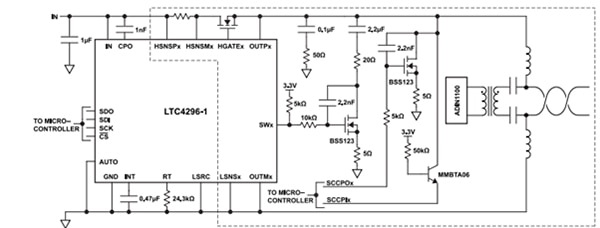 Figure 1: An IEEE 802.3cg-Compliant SPoE PSE utilizing the LTC4296-1, with one of five ports shown and some pins omitted for clarity. (Image source: Analog Devices Inc.)
Figure 1: An IEEE 802.3cg-Compliant SPoE PSE utilizing the LTC4296-1, with one of five ports shown and some pins omitted for clarity. (Image source: Analog Devices Inc.)
The LTC4296-1 is an IEEE 802.3cg-compliant, five port, SPoE, PSE controller that comes in a QFN-48 package (Figure 2). By simplifying the design and installation with SPoE and using standardized power and Ethernet data over a single pair cable, the LTC4296-1 is well-suited for interoperability with 802.3cg powered devices.
Delivering power using external, low drain-source on-resistance (RDSON) N-channel metal-oxide-semiconductor field-effect transistors (MOSFETs), the LTC4296-1 ensures application ruggedness while minimizing voltage drops.
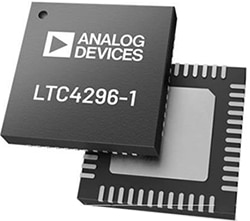 Figure 2: The LTC4296-1 is designed for optimum interoperability. (Image source: Analog Devices Inc.)
Figure 2: The LTC4296-1 is designed for optimum interoperability. (Image source: Analog Devices Inc.)
Analog current limit (ACL) can provide short-circuit and controlled inrush protection by utilizing high-side circuit breakers with foldback. Backfeed faults and ground faults in non-isolated applications can be avoided through an optional low-side circuit breaker, protecting the negative output.
Also, to ensure the full operating voltage is only applied to the cable when power delivery (PD) is present, PD classification via the serial communication classification protocol (SCCP) along with maintaining full voltage signature (MFVS) is necessary.
Devices like the LTC4296-1 provide a versatile SPoE, PSE solution, and can be easily integrated for an optimal controller application.
Achieve interference-free data traffic with inductors
There are various inductors for multiple applications. The 10BASE-T1L application inductor types include common-mode chokes (CMCs), isolation inductors (ICI), and differential mode inductors (DMIs).
The ICI70CGI series isolation inductors solve the issue of galvanic isolation between PHY and connector in certain applications. They offer a data coupling ratio of 1:1 with inductance values of 1.0 mH and 2.2 mH and an isolation voltage of 2250 VDC.
It is possible to connect sensors and actuators with PoDL with just one pair of wires, realizing data and power transmission via this line. The connector utilizes special differential-mode chokes, a passive electronic component that suppresses high-frequency noise in circuits, functioning as a filter by attenuating differential mode noise. Whether it is a situation with or without power transmission while using PoDL to implement industrial SPE, in specific applications galvanic isolation between the PHY and the connector is required. Isolation inductors such as the RCM70CGI-471 (Figure 3) offer a transformation ratio of 1:1 capability.
The suppression of asymmetrical interference is critical to achieving interference-free data traffic. The RCM70CGI-471 is based on the IEEE 802.3cg standard for 10BASE-T1L, and is a common-mode choke designed for a maximum current of 700 mA at 80 V, with an inductance value of 470 µH.
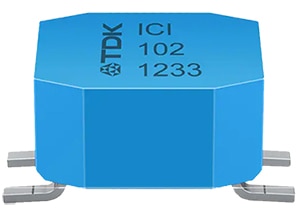 Figure 3: The RCM70CGI-471 common-mode choke is based on the IEEE 802.3cg standard. (Image source: TDK)
Figure 3: The RCM70CGI-471 common-mode choke is based on the IEEE 802.3cg standard. (Image source: TDK)
To suppress interference in the systems, a special differential-mode choke is required.
There are different versions that cover all six power classes (10 to 15) in the PID series, according to IEEE 802.3cg., and saturation currents that can range from 360 mA to 2100 mA.
PoDL evaluation boards ensure connectivity
IIoT requires total system integration, ensuring connectivity from end devices to the control room in real-time data transmission. SPE will simplify networks, allowing transmission ranges up to 10 Mbps over distances up to 1,000 m while supplying power simultaneously.
TDK has a variety of different 10BASE-T1L plug-and-play test boards for six different power classes developed to match the following evaluation boards from EVAL-ADIN1100EBZ (Figure 4), EVAL-ADIN1110EBZ and accelerate the design and test stage.
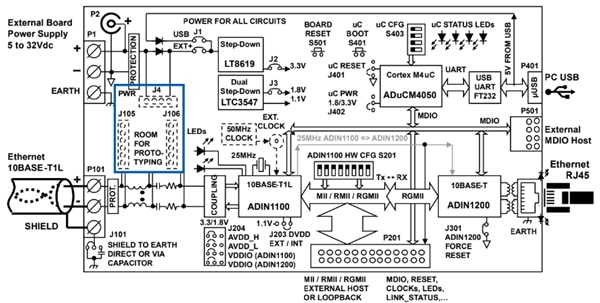 Figure 4: SPE will simplify networks, allowing transmission ranges up to 10 Mbps over distances up to 1,000 m, shown here in this EVAL-ADIN1100EBZ simplified block diagram. (Image source: TDK)
Figure 4: SPE will simplify networks, allowing transmission ranges up to 10 Mbps over distances up to 1,000 m, shown here in this EVAL-ADIN1100EBZ simplified block diagram. (Image source: TDK)
Interface boards with two modes of operation
Analog Devices’ ADIN1100 robust, industrial, low-power 10BASE-T1L Ethernet PHY is ROHS3 Compliant, has a 1 (unlimited) Moisture Sensitivity Level (MSL), and a REACH Unaffected status that features a flexible platform for the quick evaluation of the ADIN1100 robust, low power 10BASE-T1L PHY.
The EVAL-ADIN1100EBZ (Figure 5) features 10 Mbps Single Pair Ethernet (SPE) connections with devices across a considerable distance of 1.7 km of cable, with an evaluation board that has two modes of operation, providing maximum flexibility. The full set of ADIN1100 register settings, such as diagnostics and link quality monitoring diagnostics, can be accessed when connected to a PC with the ADIN1100 GUI software.
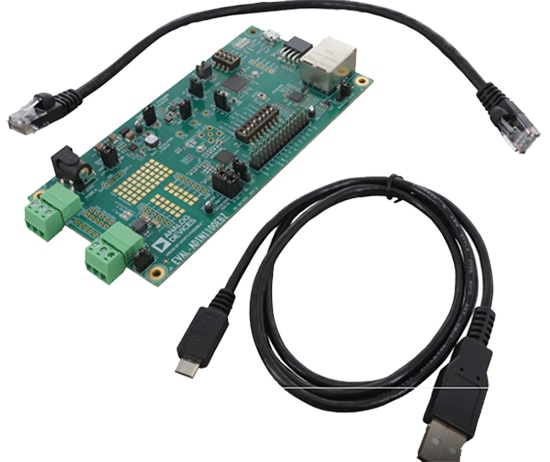 Figure 5: An ADIN1100 Ethernet PHY Interface Evaluation Board. (Image source: Analog Devices Inc.)
Figure 5: An ADIN1100 Ethernet PHY Interface Evaluation Board. (Image source: Analog Devices Inc.)
Alternatively, by setting hardware configuration switches and links, the EVAL-ADIN1100EBZ board can operate in standalone mode. Operators can monitor on-board LEDs for status, facilitated by ADIN1100 data and management interfaces, which can be easily configured to connect to an external host controller, utilizing an EVAL-SPOE-KIT-AZ LTC4296-1 PoE power management evaluation board.
Conclusion
Quality Single Pair Ethernet (SPE) is crucial to building a solid, reliable infrastructure for the Industrial Internet of Things (IIoT).
TDK Electronics, along with Analog Devices Inc., have a reputation for providing top-of-the-line SPE, so there can be easy communication from the cloud to here down on Earth.

Disclaimer: The opinions, beliefs, and viewpoints expressed by the various authors and/or forum participants on this website do not necessarily reflect the opinions, beliefs, and viewpoints of DigiKey or official policies of DigiKey.









